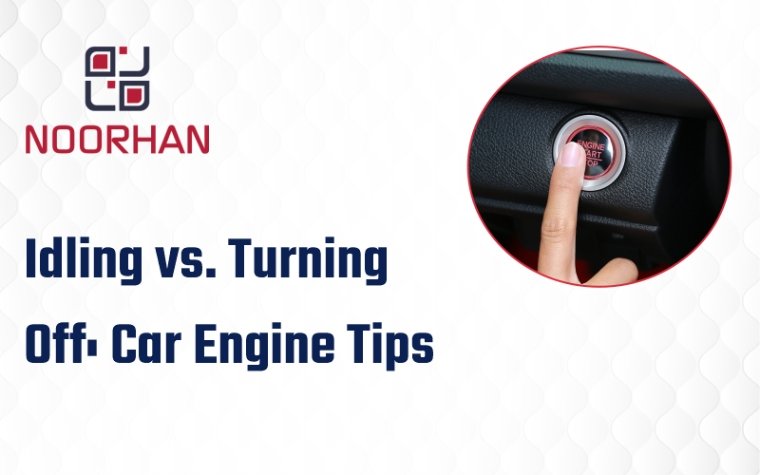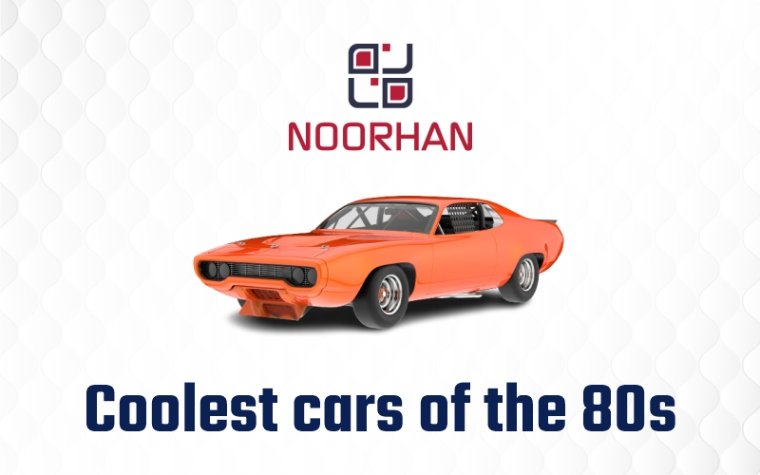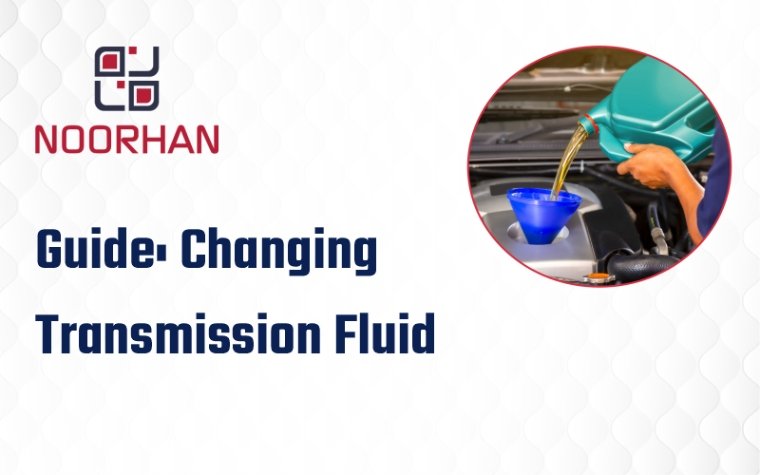-
Overview of MG DCT TechnologyOverview of MG DCT Technology
-
Common Transmission ProblemsCommon Transmission Problems
-
Diagnostic MethodsDiagnostic Methods
-
Effective Repair SolutionsEffective Repair Solutions
-
Costs & Warranty InfoCosts & Warranty Info
-
Regional Service SupportRegional Service Support
-
Preventive Maintenance TipsPreventive Maintenance Tips
-
Advanced TroubleshootingAdvanced Troubleshooting
-
Long-Term Ownership AdviceLong-Term Ownership Advice
-
FAQsFAQs
MG’s Dual Clutch Transmission (DCT) technology represents an advanced solution that combines the efficiency of manual shifting with the convenience of automatic operation. However, MG DCT transmission problems have become increasingly common among vehicle owners, particularly in regions like the UAE where extreme temperatures and driving conditions can exacerbate these issues. Understanding how to properly diagnose and solve these transmission problems can save thousands of dollars in unnecessary repairs while ensuring optimal vehicle performance and longevity.
Understanding MG DCT Transmission Technology
MG DCT Model Specifications
| Vehicle Model | Engine Displacement (cc) | Max Power (bhp) | Max Torque (Nm) | DCT Type | Service Interval (km) | DCT Fluid Change (km) | Warranty Period |
|---|---|---|---|---|---|---|---|
| MG Hector 1.5T DCT | 1451 | 143 | 250 | 6-Speed Dry DCT | 10,000 | 40,000 | 7 years/80,000 km |
| MG HS 1.5T DCT | 1496 | 169 | 275 | 6-Speed Dry DCT | 10,000 | 40,000 | 7 years/80,000 km |
| MG Hector Plus 1.5T DCT | 1451 | 143 | 250 | 6-Speed Dry DCT | 10,000 | 40,000 | 7 years/80,000 km |
| MG HS 2.0T DCT | 1999 | 231 | 370 | 7-Speed Wet DCT | 15,000 | 60,000 | 7 years/80,000 km |
| MG ZST DCT | 1498 | 163 | 275 | 6-Speed Dry DCT | 10,000 | 40,000 | 7 years/80,000 km |
MG vehicles equipped with DCT systems utilize sophisticated dual-clutch technology that employs two separate clutches for odd and even gear sets. This innovative design enables seamless power delivery during gear changes, theoretically providing faster shifts and improved fuel efficiency compared to traditional automatic transmissions. The dry clutch DCT systems found in most MG models operate without transmission fluid bathing the clutch assembly, making them more susceptible to heat-related issues than wet clutch alternatives.
MG’s DCT implementation varies across different models, with the Hector, HS, and ZST primarily featuring 6-speed dry DCT systems, while some higher-end variants incorporate 7-speed wet DCT technology. These transmissions require precise electronic control and regular software updates to maintain optimal performance, making them more complex than conventional automatic gearboxes.
The UAE’s extreme climate conditions present unique challenges for DCT systems, as temperatures regularly exceeding 40°C can cause accelerated clutch wear and overheating issues. Vehicle owners in this region must pay particular attention to proper maintenance schedules and driving techniques to prevent premature transmission failure.
Common MG DCT Transmission Problems
MG DCT Problem Overview
| Problem Category | Common Symptoms | Typical Mileage Range | Diagnostic Method | Solution Approach | Estimated Repair Cost (USD) |
|---|---|---|---|---|---|
| Engagement Failure | Transmission won’t engage, Engine Fault error, Car won’t move despite engine running | 20,000-50,000 km | OBD scan, Software diagnostics, Guide cable inspection | Software update, Guide cable replacement, Complete transmission overhaul | $2,000-$15,000 |
| Jerky Gear Changes | Harsh shifting, Shuddering during gear changes, Rough gear selection at low speeds | 10,000-40,000 km | Test drive, Pressure sensor check, Software analysis | Software reflash, Clutch pack replacement, Transmission service | $800-$3,500 |
| Throttle Lag/Delay | 1-2 second delay from accelerator press to movement, Sudden power surge after delay | 0-30,000 km (Often from new) | Engineering Mode check, Throttle response test, ECU diagnostics | AMT mode activation, Electronic throttle controller, Software update | $0-$500 (Software fix) |
| Overheating | DCT overheating warning, Performance reduction in traffic, Hot transmission components | 15,000-60,000 km | Temperature monitoring, Clutch oil sensor check, Cooling system inspection | Driving style modification, Auxiliary pump replacement, Transmission service | $500-$2,000 |
| Software Issues | System errors, Inconsistent performance, Need for ECU resets | 0-20,000 km | Software version check, OTA update availability, ECU reset | OTA software update, ECU reflash, System reset | $0-$300 |
| Clutch Wear | Slipping gears, Poor acceleration, Burning smell | 40,000-80,000 km | Pressure test, Physical inspection, Performance analysis | Clutch replacement, Transmission rebuild, Complete unit replacement | $3,000-$8,000 |
Intermittent Engagement Failures
One of the most serious MG DCT transmission problems involves complete engagement failure, where the transmission refuses to engage any gear despite the engine running normally. This issue typically manifests as an “Engine Fault” error message, with the vehicle remaining stationary regardless of gear selection. Many owners report that multiple restarts and gear cycling sometimes temporarily resolve the problem, only for it to return unpredictably.
Research indicates this problem often stems from guide cable issues connected to electronic actuators within the transmission system. The intermittent nature makes diagnosis particularly challenging, as traditional diagnostic scans frequently fail to detect error codes during symptom-free periods.
Jerky Gear Changes and Harsh Shifting
Harsh gear changes represent perhaps the most commonly reported MG DCT issue, particularly noticeable during low-speed operation and city driving conditions. Owners describe these symptoms as jerky transitions between gears, shuddering sensations during acceleration, and rough gear selection when pulling away from stops.
This problem typically develops within the first 10,000-40,000 kilometers of ownership and becomes progressively worse without intervention. The dry clutch design makes MG DCT systems particularly susceptible to this issue, as clutch packs experience direct wear without the cooling and lubrication benefits of transmission fluid.
Throttle Lag and Response Delays
Many MG DCT owners experience significant throttle lag, characterized by 1-2 second delays between accelerator input and vehicle response. This issue proves particularly dangerous in traffic situations where immediate acceleration is required for safe merging or overtaking maneuvers.
The throttle lag problem often manifests from new vehicle delivery and can be addressed through engineering mode settings adjustments. Some owners have found success switching their transmission control to “AMT” mode through hidden engineering menus, though this requires specific activation procedures.
Overheating Issues in Hot Climates
DCT overheating represents a critical concern for UAE vehicle owners, where ambient temperatures regularly exceed recommended operating ranges. Overheating symptoms include transmission warning lights, automatic shifting to higher gears to reduce load, and noticeable performance reduction during stop-and-go traffic conditions.
The overheating problem becomes particularly acute in urban driving situations where frequent clutch engagement generates excessive heat that cannot be adequately dissipated. This issue can lead to permanent clutch damage if not addressed promptly through proper driving techniques and system maintenance.
Professional Diagnostic Procedures
Complete Diagnostic Checklist
| Diagnostic Step | Tools Required | Expected Time (minutes) | Key Points to Check |
|---|---|---|---|
| 1. Initial System Scan | OBD-II Scanner, MG Diagnostic Tool | 15 | Error codes, System status, Module communication |
| 2. Software Version Check | MG Connect App, Dealer diagnostic system | 10 | Current firmware version, Available updates, Compatibility |
| 3. Test Drive Assessment | Vehicle, Test route with various conditions | 30 | Shift quality, Throttle response, Engagement timing |
| 4. Temperature Monitoring | Infrared thermometer, Temperature sensors | 20 | Operating temperature, Overheating signs, Cooling efficiency |
| 5. Pressure System Test | Pressure gauges, Hydraulic test equipment | 25 | Clutch pressure, Hydraulic system integrity, Leak detection |
| 6. Electrical System Check | Multimeter, Electrical diagnostic tools | 20 | Sensor functionality, Wiring integrity, Power supply |
| 7. Mechanical Inspection | Lift access, Physical inspection tools | 45 | Physical wear, Component condition, Fluid quality |
| 8. Final Calibration | Diagnostic software, Programming tools | 15 | System reset, Adaptation learning, Performance verification |
Initial System Assessment
Proper MG DCT diagnosis begins with comprehensive OBD-II scanning using MG-specific diagnostic equipment capable of accessing transmission control modules. Standard generic scanners often fail to retrieve DCT-specific error codes, making professional-grade diagnostic tools essential for accurate problem identification.
The diagnostic process should include verification of current software versions and available updates, as many MG DCT problems stem from outdated control algorithms rather than mechanical failures. MG has released multiple software updates addressing various DCT performance issues, making version verification crucial for proper diagnosis.
Temperature and Pressure Analysis
Advanced diagnostic procedures must include transmission temperature monitoring during various operating conditions. Excessive operating temperatures often indicate underlying problems with clutch engagement, cooling system efficiency, or inappropriate driving techniques that stress the transmission system.
Hydraulic pressure testing provides critical insight into clutch pack condition and system integrity. Pressure variations outside manufacturer specifications typically indicate internal wear or electronic control problems requiring immediate attention.
Software and Calibration Verification
Modern MG DCT systems rely heavily on software calibration for optimal performance, making regular updates essential for problem prevention. The diagnostic process should verify current calibration status and identify any available over-the-air updates that address known performance issues.
Many seemingly mechanical problems actually stem from software calibration issues that can be resolved through ECU reflashing or system resets. This makes software verification a critical first step before pursuing expensive mechanical repairs.
Proven Solution Strategies
Software Updates and Calibration Reset
The most effective solution for many MG DCT problems involves software updates and system recalibration. MG has released numerous updates addressing throttle lag, shift quality, and engagement issues that can often resolve symptoms without mechanical intervention.
The reset procedure varies by model but typically involves accessing engineering mode through specific touchscreen sequences. Many owners report significant improvement after switching transmission control settings from “AT” to “AMT” mode, which modifies shift algorithms for smoother operation.
Professional recalibration requires specialized diagnostic equipment and should be performed by qualified technicians familiar with MG transmission systems. Improper calibration attempts can worsen existing problems or create new issues requiring expensive repairs.
Mechanical Repair Options
When software solutions prove insufficient, mechanical repairs become necessary to address underlying component wear. Common mechanical solutions include clutch pack replacement, guide cable repair, and complete transmission overhaul depending on problem severity and component condition.
Clutch pack replacement typically costs between $3,000-$8,000 USD and addresses issues related to worn friction materials, pressure plate damage, and internal hydraulic problems. This repair often provides long-term resolution for engagement and shifting problems when performed correctly.
Complete transmission replacement represents the most expensive solution, ranging from $8,000-$15,000 USD including labor costs. This option becomes necessary when multiple internal components have failed or when cost-effective repair is impossible.
Driving Technique Modifications
Proper driving techniques can significantly extend MG DCT lifespan and prevent many common problems. UAE drivers should avoid prolonged stationary periods in drive mode, use neutral gear during extended stops, and allow adequate warm-up time in extreme temperatures.
Hill holding techniques require particular attention, as many owners inadvertently damage clutch systems by using accelerator pressure to maintain position on inclines. Proper technique involves full stops with parking brake engagement rather than clutch-dependent positioning.
Traffic management strategies include maintaining greater following distances to reduce frequent stop-start cycles and using manual mode in heavy congestion to prevent excessive automatic shifting. These techniques reduce clutch wear and prevent overheating in challenging driving conditions.
Cost Analysis and Warranty Considerations
Repair Cost Expectations
MG DCT repair costs vary significantly based on problem complexity and required intervention level. Software-based solutions typically range from $0-$500 USD, making them the most cost-effective approach when applicable. These fixes often resolve throttle lag, shift quality, and minor engagement issues without mechanical intervention.
Component replacement costs range from $800-$8,000 USD depending on specific parts and labor requirements. Clutch pack replacement represents the middle ground at $3,000-$5,000 USD, while complete transmission replacement can exceed $12,000 USD in severe cases.
UAE-specific cost considerations include higher parts prices due to import requirements and limited local service expertise. Owners should budget approximately 20-30% higher than international averages for major DCT repairs in the Gulf region.
Warranty Coverage and Service Requirements
MG offers 7-year/80,000-kilometer warranty coverage for most DCT-equipped vehicles, though specific terms vary by model and registration date. Recent warranty modifications require servicing at authorized MG dealers to maintain full coverage, making independent repair options more limited.
Warranty exclusions often include problems attributed to driving technique, environmental conditions, or lack of proper maintenance. UAE owners should document all service visits and maintain detailed records to support warranty claims for DCT-related issues.
Commercial vehicle usage, including taxi or delivery service, significantly reduces warranty coverage to 5 years/160,000 kilometers in most cases. Fleet operators should factor these limitations into their total cost of ownership calculations.
Regional Service Network and Support
UAE-Specific Service Considerations
The UAE market presents unique challenges for MG DCT service, with limited authorized service centers and varying technical expertise levels across different emirates. Dubai and Abu Dhabi typically offer the most comprehensive service capabilities, while northern emirates may require longer travel distances for specialized DCT repairs.
Parts availability can present significant delays, with complex DCT components often requiring 2-4 weeks for procurement from international suppliers. Owners should plan accordingly for major repairs and consider preventive maintenance to avoid extended vehicle downtime.
Climate-specific service recommendations include more frequent transmission fluid changes, enhanced cooling system maintenance, and modified driving technique training for UAE conditions. These adaptations help prevent heat-related failures common in extreme temperature environments.
Professional Service Selection
Choosing qualified service providers becomes critical for successful MG DCT repairs, as improper diagnosis or repair can worsen existing problems. Recommended criteria include MG factory training certification, access to genuine parts, and experience with DCT-specific diagnostic equipment.
Independent service options exist but require careful vetting to ensure appropriate expertise and equipment availability. Some independent providers offer competitive pricing but may lack access to latest software updates or specialized diagnostic tools required for complex DCT problems.
Service network limitations in remote areas may necessitate travel to major urban centers for comprehensive DCT repairs. Owners should factor these logistics into their maintenance planning and emergency repair strategies.
Preventive Maintenance Best Practices
Regular Service Scheduling
Proper maintenance scheduling proves essential for MG DCT longevity, with service intervals varying by model and operating conditions. Standard recommendations call for 10,000-kilometer service intervals for most DCT-equipped models, though UAE conditions may require more frequent attention.
DCT fluid changes should occur every 40,000-60,000 kilometers depending on transmission type and operating conditions. Dry clutch systems require particular attention to cooling system maintenance, while wet clutch variants need fluid quality monitoring.
Temperature monitoring during service visits can identify developing problems before they require expensive repairs. Professional temperature measurement should include both ambient and operating temperature readings under various load conditions.
Environmental Adaptation Strategies
UAE environmental conditions require specialized maintenance approaches not typically necessary in temperate climates. Enhanced cooling system maintenance, more frequent inspections, and modified operating procedures help prevent heat-related DCT failures.
Parking strategies become important in extreme heat, with covered parking significantly reducing transmission stress during initial startup periods. When covered parking is unavailable, allowing extended warm-up periods helps prevent thermal shock to DCT components.
Air conditioning usage affects DCT performance through increased engine load and reduced cooling airflow. Balancing comfort requirements with transmission protection requires understanding these interactions and adjusting driving patterns accordingly.
Advanced Troubleshooting Techniques
Engineering Mode Access and Settings
Many MG DCT problems can be resolved through engineering mode adjustments accessible via hidden touchscreen menus. The activation process requires specific sequences of corner taps followed by rapid selection of engineering options, though procedures vary by model year and software version.
The most significant improvement often comes from switching transmission control from “AT” (Automatic Transmission) mode to “AMT” (Automated Manual Transmission) mode. This change modifies shift algorithms and throttle response characteristics to provide smoother operation and reduced lag.
EU-V emission setting adjustments have also proven beneficial for some owners, though the specific impact varies by vehicle configuration and driving conditions. These settings should only be modified by knowledgeable technicians who understand the potential implications.
Electronic Throttle Controller Integration
Some owners report success using aftermarket electronic throttle controllers to address throttle lag issues when software solutions prove insufficient. These devices modify accelerator pedal signal processing to provide more immediate throttle response, though they don’t address underlying DCT mechanical problems.
Controller effectiveness varies significantly based on specific DCT problems and installation quality. Professional installation and calibration prove essential for optimal results and to avoid potential warranty complications.
Compatibility considerations must include existing vehicle electronics and warranty implications before pursuing aftermarket solutions. Some modifications may void manufacturer warranties or create unintended system interactions.
Long-term Ownership Strategies
Replacement Timing Considerations
Understanding optimal replacement timing helps owners make informed decisions about continued repairs versus vehicle replacement. Vehicles approaching 80,000 kilometers with recurring DCT problems often reach economic repair limits where replacement becomes more cost-effective than continued maintenance.
Resale value impact from DCT problems can be substantial, with known transmission issues significantly reducing market appeal. Early resolution of DCT problems helps maintain vehicle value and prevents more expensive failures later in ownership.
Market trends suggest increasing availability of conventional automatic alternatives as MG responds to DCT reliability concerns. Future model selection should consider transmission type as a key factor in long-term reliability and cost of ownership.
Alternative Transmission Options
MG has introduced CVT and conventional automatic options in response to DCT reliability concerns. These alternatives offer improved reliability at the cost of slightly reduced fuel efficiency and performance characteristics.
Hybrid powertrains represent another alternative that can provide smooth operation while addressing efficiency concerns. These systems often incorporate different transmission technologies that avoid many DCT-specific problems.
Market availability of non-DCT options varies by region and model year, making early research important for buyers seeking to avoid potential DCT complications.
Frequently Asked Questions
How can I tell if my MG DCT transmission is failing?
Common warning signs include harsh or jerky gear changes, delayed engagement when shifting from park to drive, unusual noises during gear transitions, and dashboard warning lights. In severe cases, you may experience complete engagement failure where the car won’t move despite the engine running.
Is the throttle lag in my MG DCT normal?
While some delay is characteristic of DCT systems, excessive lag (1-2 seconds) is not normal and can often be resolved through software updates or engineering mode adjustments. Many owners report significant improvement after changing transmission settings from AT to AMT mode.
How much does it cost to fix MG DCT problems in the UAE?
Repair costs vary widely depending on the specific issue. Software fixes typically cost $0-$500, while mechanical repairs range from $800-$3,500 for component replacement. Complete transmission replacement can cost $8,000-$15,000, with UAE prices typically 20-30% higher than international averages due to parts import costs.
Will my MG warranty cover DCT transmission problems?
MG provides 7-year/80,000-kilometer warranty coverage for most DCT issues caused by manufacturing defects. However, problems attributed to driving technique, environmental conditions, or lack of proper maintenance may not be covered. Recent warranty changes require servicing at authorized MG dealers to maintain full coverage.
How often should I service my MG DCT transmission?
Standard service intervals are every 10,000 kilometers for most MG DCT models, with DCT fluid changes required every 40,000-60,000 kilometers depending on your specific transmission type. UAE’s extreme climate conditions may require more frequent service intervals.
Can I prevent MG DCT overheating in UAE's hot climate?
Yes, prevention strategies include avoiding prolonged idling in drive mode, using neutral gear during extended stops, allowing adequate warm-up time, maintaining proper following distances to reduce stop-start cycles, and ensuring your cooling system is properly maintained. Covered parking also helps reduce initial transmission stress.
Should I buy a used MG with known DCT problems?
This depends on the specific issues, repair history, and asking price. DCT problems can be expensive to fix, so factor repair costs into your purchase decision. If the seller has documentation of recent DCT service or software updates, this may indicate better reliability. Consider having a pre-purchase inspection by a qualified MG technician.
Are there any recalls for MG DCT transmissions?
MG has issued software updates and recalls for various DCT-related issues, including a notable recall of 14,000 Hector SUVs for DCT software updates in 2021. Check with your local MG dealer or the manufacturer’s website for any recalls specific to your vehicle’s VIN number.
Conclusion
Understanding and properly maintaining your MG DCT transmission requires attention to both mechanical and software aspects of this sophisticated system. While DCT technology offers performance advantages, success in hot climates like the UAE depends heavily on proper maintenance, appropriate driving techniques, and prompt attention to developing problems. Regular professional service, software updates, and environmental adaptation strategies can significantly extend transmission life and prevent expensive failures.
By following the diagnostic procedures and solution strategies outlined in this guide, MG owners can make informed decisions about their transmission maintenance and repair needs. Early intervention often prevents minor issues from developing into major problems, making knowledge of proper DCT care essential for successful long-term ownership in challenging operating environments.





